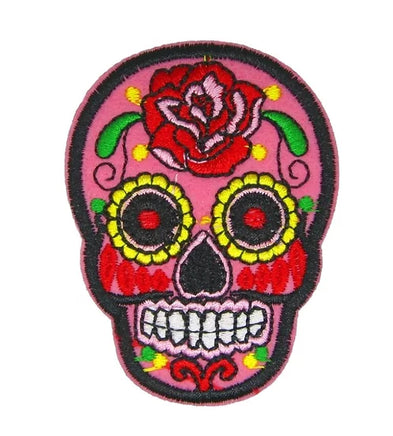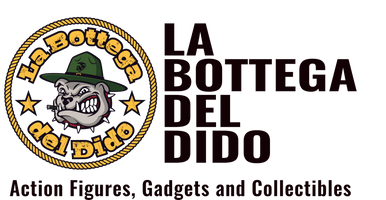
Patch with thermo-adhesive back
Measures 5 x 5 cm
Application
- The patch can be sewn (recommended) or heat-applied with a hot iron following these directions:
- heat the part where to apply the patch
- place the patch and cover it with a damp cloth
- bring the iron to a high temperature
- iron by applying pressure for about 15-20 seconds with the iron
The calaveras are sugar skulls typical of the Day of the Dead celebrations in Mexico, made of brown sugar, rarely flavored with vanilla, almost always composed of a single stick decorated with green, blue, yellow, red vegetable dyes and sheets of paper. edible gold. Their dimensions vary from 2 to 20 cm. Their function is both that of "ofrenda" (that is a small object to be offered to the deceased on a ritual altar composed for the Día de Muertos - and therefore, in this case, it bears the name of the deceased to whom it is addressed) and sweets for the children; in this sense the calavera can be accompanied by small skull-shaped mud toys, made with two concave parts, used as rattles and painted in black, red and silver. In ancient times, the toy skull joined the tradition of “asking for a skull”, which consisted of going out to ask for alms to buy calaveras to be placed on the altars of churches and tombs during the holidays. The calaveras, and more generally skulls and skeletons, are often depicted in the paintings of the pre-Columbian era, however, intended as symbols of rebirth. Furthermore, the name "calavera" can also identify artistic representations of skulls, such as the lithographs by José Guadalupe Posada: of the latter the most famous is the Calavera Catrina, a lithography depicting a skull of a woman with a European-style hat; it satirically represents all those Mexicans who, in the pre-revolutionary era, wanted to adopt the ways of the European high bourgeoisie.
